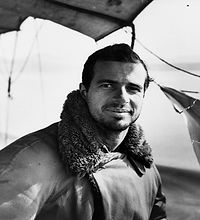
Pulitzer Book Club Inclusion Guide

"A Bell for Adano"
by John Hersey
INCLUSION MILESTONES
1945
• World War II ends; concentration camps liberated
• Wheelchair basketball begins
• Pap smear to detect cervical cancer perfected


AUTHOR INSPIRATIONS
Hersey covered the Allied invasion of Sicily as Time journalist. A Bell for Adano based on service of Italian-American Army Colonel Frank Eugene Toscani, Allied governor of Licata, Sicily and pre-war NYC sanitation clerk. Hersey spent a few days with Toscani, then wrote A Bell for Adano in a month. Toscani later filed defamation suit, resolved over dinner when Hersey agreed to donate Adano film profits to American Red Cross.
GET THE BOOK
Featured Reader Wanted!
Featured Reader
– Share your key take-away about inclusion in this book in a sentence or two.
– Write a paragraph or two (up to 250 words) to describe your thoughts on exclusion/inclusion in the book, why you related or did not connect with the book, and why you think reading, inclusion and dialog about inclusion matter.
– Identify the name and website address of a cause you support with an inclusive mission.

WW2 Army major sets leadership standard in occupied Sicilian town

Angry, arrogant army general orders shooting of mule.

Spotlight on character inspired by real life, good guy American war hero.

Fast: 269 pages, 8.5 hours
Leaders serve people.
Cruel, arrogant, disconnected general (a la Patton) and bureaucracy versus caring major in touch with needs, happiness of people in occupied town.
Bad (drunken) soldiers; caricatures of randy soldiers.
Prejudice against Italians, Sicilian stereotypes.
Fear and suspicion of Americans and democracy. Corrupt, violent, lying fascists.
British colonial attitude.
Human cooperation between Army and Navy.

Forget Army rations. Go to somebody’s house for pasta and fried eggplant, followed by a large fish of the best five-lira grade. Finish with torrone. Toast an inspiring leader with Italian red wine and toss a bag of caramels to kids.

“As in every nation, there are some bad men in America. It is possible that some Americans who come here will do bad things. If they do, I can assure you that most of the Americans will be just as ashamed of those things as you are annoyed by them.”

Party in a town square with a view of a bell tower.

What inspires respect and disrespect of a leader?
What triggered collaboration and compliance?
How can a military or political person practice servant-leadership?
How does happiness fit into the hierarchy of needs and military priorities, now and in the past?
How have American occupiers shaped views of America in the novel and in the real world over time?
What is/was the process for countermanding an order?
How do shame, loneliness, selflessness, generosity, and courage influence the behavior of people in the novel?
Talk about the ways prejudice and stereotypes play out in this book.
How and why do people and a mule die in this novel.
A 2014 article in The Journal of American History was titled "Produce More Joppolos.” Is this happening? Why/why not? What did you take away about how Americans military should function in an occupied territory?
How do branches of the military generally interact/intersect?
How is democracy different from fascism? Be sure to talk about the role of communication/lies/slander.
Discuss what the bell in Adano and the Liberty Bell tell citizens about human interaction. Why can a symbol change the way people treat each other?

If Sicily is not in the cards, go to Philadelphia’s Independence Mall. Notice inscription on Liberty Bell. Visit Independence Hall; think about what democracy means. Head to South Philly, eat at Italian Market, and see the Navy Yard’s Seaport Museum. Attend event put on by America-Italy Society of Philadelphia. Cross river to Camden and see Battleship New Jersey its ship’s bell, or take train NYC and go to The Trash Museum with art curated by a sanitation worker.

A Bell for Adano (1945 film). Also adapted as a Broadway play (1944).

Notable Hersey war novels: Hiroshima (1946) and The Wall (1950). Other novels include Into the Valley (1943), Men on Bataan (1942), The War Lover (1959), The Child Buyer (1947), The Marmot Drive (1953), White Lotus (1965), Too Far to Walk (1966), and seven others. Nonfiction about education and racism: The Algiers Motel Incident (1968) and Letter to the Alumni (1970). Non-fiction about Hersey’s
x-wife’s x-boyfriend, JFK: Of Men and War (1965).